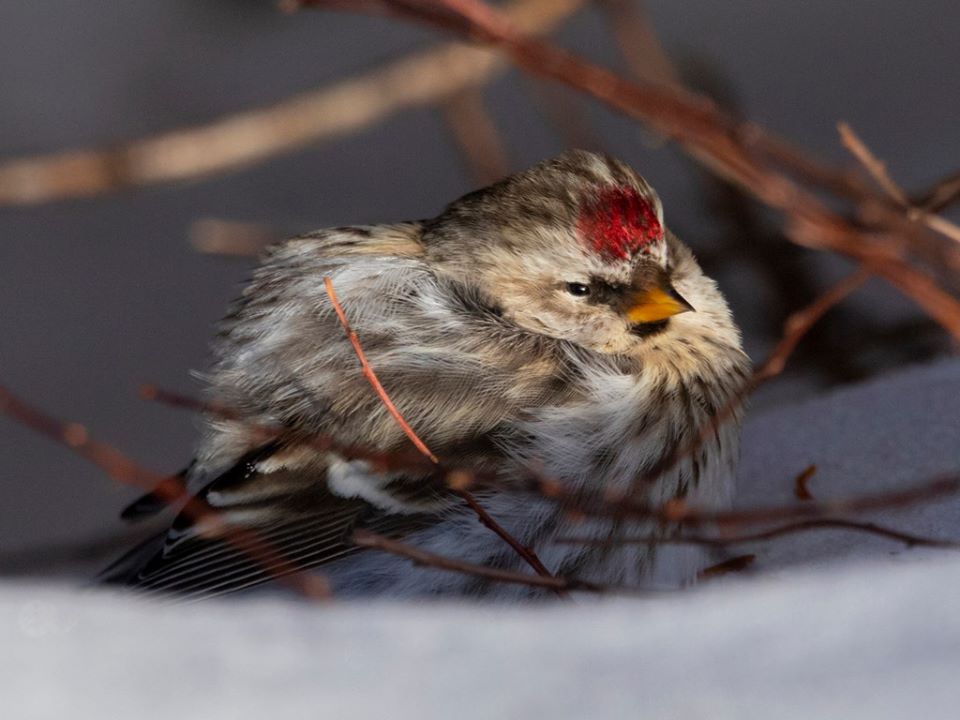Text by Julie Ouellette, pictures by Denis Doucet, both of Fundy National Park
Bird #1: The Black-capped Chickadee hides seeds and other food items to eat later. Each item is placed in a different spot and the chickadee can remember thousands of hiding places!
Bird #2: The Common Redpoll can survive in -50C and can tunnel into the snow to stay warm!
Bird #3: The Iceland Gull. Not all seagulls hang out at Mcdonald's trying to steal your fries! Iceland Gulls are great travellers: they nest in the far northern arctic, and migrate south to Atlantic Canada to spend their winters in "warmer" waters!
Bird #4: The Red-breasted Nuthatch collects resin globules from coniferous trees and plasters them around the entrance of its nest hole. It may carry the resin in its bill or on pieces of bark that it uses as an applicator. The male puts the resin primarily around the outside of the hole while the female puts it around the inside. The resin may help to keep out predators or competitors – the nuthatch avoids the resin by diving directly through the hole!
Bird #5 : The Pileated Woodpecker is the largest woodpecker in North America–nearly the size of a crow! The famous cartoon character Woody Woodpecker shares many characteristics in common with the pileated woodpecker in terms of both physical appearance as well as his characteristic laugh, which resembles the call of the pileated woodpecker.
Bird #6: The Spruce Grouse has great confidence in its camouflage, and will often stay still even when approached within a few feet before taking flight! It is this characteristic that has earned them the famous nickname "Fool Hens."
Bird #7: The Brown Creeper can crawl up trunks of trees, ferreting out insect eggs and crumbs missed by other active birds. Once they reach the top of a tree, they will flutter down to the base of another to begin spiraling up again!
Bird #8: The Pine Siskin. When eating from conifers, it usually hangs upside down from the tips of the trees!
Bird #9: The Northern Shrike. This smart, predatory songbird forages by watching from an exposed perch, then darting out in swift, powerful flight after spotting its prey! Northern Shrikes feed on small birds, mammals and insects.
Bird #10: The Barred Owl nests in large tree cavities about 10 centimetres in diameter. In our neck of the woods, they almost always choose such holes in big, old Yellow birch trees!
Bird #11: The Song Sparrow is one of the most familiar North American sparrows! You can find this russet-and-gray bird gliding along wetland edges and ducking into dense, low vegetation after short bursts of their distinctive, tail-pumping flight!
Bird #12: The Blue Jay can mimic the calls of hawks to warn other jays that a hawk is around, or to deceive other species into believing a hawk is present!

 RSS Feed
RSS Feed